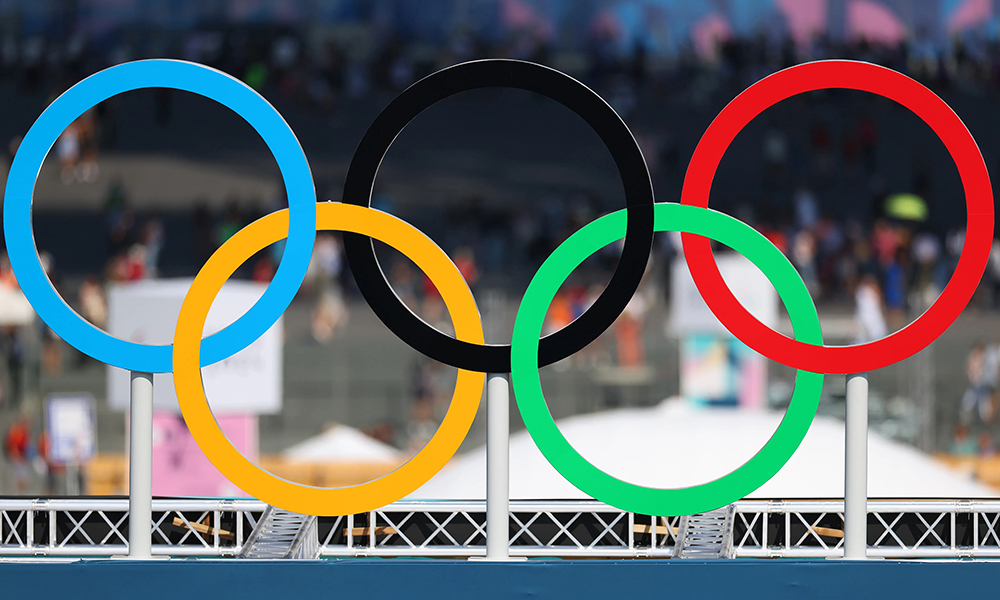
体育运动阐明了做人的真谛,尤其是竞争法则。这就是为什么奥运会让人无法抗拒。奥运会其实就是企业竞争的缩影,运动员像我们一样,在限定的时间和地点内,与伙伴们一起为实现目标而奋斗,而强大的对手则试图从中阻挠。更妙的是,所有参加奥运会的人几乎都是超人。谁不想研究一下我们能从这一壮观场面中汲取的经验教训呢?
我们可从奥运会中汲取以下四点商业经验:
98%还不够好。公司喜欢宣称自己的产品、服务和能力是世界一流的,但真的是这样吗?巴黎奥运会表明,要想跻身世界顶尖行列,难度之大令人咋舌。以游泳比赛为例。在男子400米自由泳决赛中,德国选手卢卡斯•马滕斯以3分41秒78的成绩夺得金牌。韩国选手金宇敏以3分42秒50的成绩获得铜牌。金牌与无奖牌之间的差距仅为0.3%。
再看女子四人双桨决赛。赛道长度为2,000米,共有四条赛艇参赛。英国队在前1,999米一直落后荷兰队,但在最后一米反超荷兰队,以0.15秒之差夺冠。德国队获得铜牌。金牌与无奖牌之间的差距为0.9%。
许多企业领导人都声称,他们的公司今年将“把金牌带回家”。这很好。但请记住,许多优秀选手参加了巴黎奥运会,成绩达到了顶尖选手的98%或99%,与顶尖选手不相上下,却一无所获。尽一切努力把金牌带回家,但这何其艰难,千万不要自欺欺人。
标准不断提升。在1896年奥运会上,希腊选手斯皮里顿•路易斯以2小时58分50秒的成绩夺得马拉松冠军。如今,这个成绩在高中田径比赛中也只能算一般;目前的高中纪录是2小时22分51秒。
1908年奥运会后,“官员们几乎禁止跳水运动员翻腾两周,因为他们认为这种跳法很危险,人类根本无法控制,”人类表现权威专家安德斯•埃里克森这样说道。如今,奥运跳水运动员很少仅翻腾两周,因为这太容易了。
在巴黎奥运会上,西蒙•拜尔斯是目前最杰出的标准提升者。她带领美国女子体操队夺得金牌,并赢得个人全能金牌,这在某种程度上是因为她做出了世界上其他人都做不到的动作。不知道竞争对手需要多长时间才能赶上。
企业竞争虽然与此大同小异,但这并不妨碍企业领导人对此视而不见。微软嘲笑苹果的iPhone,因为它用的是触摸屏而不是键盘;而微软自己的手机业务也因此一蹶不振。MySpace的出现早于Facebook,但却跟不上Facebook的创新步伐。柯达开创了数码摄影的先河,但未能预见其最终的主导地位。
目光短浅的公司可以坚持数年,奥林匹克运动员却不行。稍有落后,就会被无情淘汰。这对企业领导人是个警醒,但前提是他们敢于正视这一点。
团队有明星。在巴黎奥运会上,拜尔斯和美国女子体操队就是例证。在奥运会上,明星风采有目共睹,她将在未来的岁月里声名远播,备受赞誉。而在公司,“明星”并不总能享有明星般待遇。一位经理曾对我说:“这会扰乱团队。怎么能将一个人与另一个收入高出50%的人相提并论呢?”但这一推理存在很大的问题。
要想知道原因何在,看看职业运动队就知道了。在过去十年中,美国职业棒球大联盟(Major League Baseball)的霸主是洛杉矶道奇队(Los Angeles Dodgers)。泰勒•格拉斯诺是该队年薪最高的球员之一,他是一名投手,平均年薪为2,730万美元。另一名投手加文•斯通是道奇队中收入最低的球员之一,平均年薪为74.25万美元。两个人做着同样工作,一个人的薪水却是另一个人的37倍。但不知为何,道奇队的团队精神并没有遭到破坏,恰恰相反。
每支运动队都有明星,而且队里的每个人都知道他们是谁。许多企业团队却试图压制这种现实。优胜运动队——无论是职业队还是奥运队——都接受这一现实。
团队优秀并不代表全体队员优秀。在过去的奥运会上,美国棒球队和篮球队在美国发明的运动项目中被践踏,自取其辱。在包括棒球比赛的六届奥运会上(1992—2008年及2020年),美国全明星球队只赢过一次(2000年)。在2004年奥运会上,美国篮球队成员全部是NBA百万富翁,但在决赛中却不敌阿根廷和意大利,只获得铜牌,其实在小组赛中,美国队还输给了波多黎各和立陶宛。在巴黎奥运会上,如今的美国篮球队目前看来实力强劲,季后赛在即。
在商界,梦之队也会像在体育界的情况一样遭遇失败。想想美国长期资本管理公司(Long-Term Capital Management)吧,这家公司吸纳了华尔街传奇人物和诺贝尔经济学奖得主,但最终还是以失败告终。
关于团队精神,可以回顾一下有史以来最鼓舞人心的美国奥运代表队,即1980年在普莱西德湖击败苏联队的冰球队。当时,因为职业球员不允许参赛,但苏联队二三十岁球员的水平和职业球员不相上下。教练赫伯•布鲁克斯不得不从美国各大高校挑选球员,他希望通过个人默契和高强度训练来组建一支球队。在电影中,布鲁克斯的助手看到教练的花名册后提出异议,认为他漏掉了许多国内最优秀的大学生球员。对此,布鲁克斯给出了反梦之队的基本理念:“我不是在寻找最好的球员,克雷格。我在寻找合适的球员。”
在奥运会的热闹氛围中,如果你也偶然发现了一些深奥的道理,请不要感到惊讶。(财富中文网)
译者:郝秀
审校:汪皓
体育运动阐明了做人的真谛,尤其是竞争法则。这就是为什么奥运会让人无法抗拒。奥运会其实就是企业竞争的缩影,运动员像我们一样,在限定的时间和地点内,与伙伴们一起为实现目标而奋斗,而强大的对手则试图从中阻挠。更妙的是,所有参加奥运会的人几乎都是超人。谁不想研究一下我们能从这一壮观场面中汲取的经验教训呢?
我们可从奥运会中汲取以下四点商业经验:
98%还不够好。公司喜欢宣称自己的产品、服务和能力是世界一流的,但真的是这样吗?巴黎奥运会表明,要想跻身世界顶尖行列,难度之大令人咋舌。以游泳比赛为例。在男子400米自由泳决赛中,德国选手卢卡斯•马滕斯以3分41秒78的成绩夺得金牌。韩国选手金宇敏以3分42秒50的成绩获得铜牌。金牌与无奖牌之间的差距仅为0.3%。
再看女子四人双桨决赛。赛道长度为2,000米,共有四条赛艇参赛。英国队在前1,999米一直落后荷兰队,但在最后一米反超荷兰队,以0.15秒之差夺冠。德国队获得铜牌。金牌与无奖牌之间的差距为0.9%。
许多企业领导人都声称,他们的公司今年将“把金牌带回家”。这很好。但请记住,许多优秀选手参加了巴黎奥运会,成绩达到了顶尖选手的98%或99%,与顶尖选手不相上下,却一无所获。尽一切努力把金牌带回家,但这何其艰难,千万不要自欺欺人。
标准不断提升。在1896年奥运会上,希腊选手斯皮里顿•路易斯以2小时58分50秒的成绩夺得马拉松冠军。如今,这个成绩在高中田径比赛中也只能算一般;目前的高中纪录是2小时22分51秒。
1908年奥运会后,“官员们几乎禁止跳水运动员翻腾两周,因为他们认为这种跳法很危险,人类根本无法控制,”人类表现权威专家安德斯•埃里克森这样说道。如今,奥运跳水运动员很少仅翻腾两周,因为这太容易了。
在巴黎奥运会上,西蒙•拜尔斯是目前最杰出的标准提升者。她带领美国女子体操队夺得金牌,并赢得个人全能金牌,这在某种程度上是因为她做出了世界上其他人都做不到的动作。不知道竞争对手需要多长时间才能赶上。
企业竞争虽然与此大同小异,但这并不妨碍企业领导人对此视而不见。微软嘲笑苹果的iPhone,因为它用的是触摸屏而不是键盘;而微软自己的手机业务也因此一蹶不振。MySpace的出现早于Facebook,但却跟不上Facebook的创新步伐。柯达开创了数码摄影的先河,但未能预见其最终的主导地位。
目光短浅的公司可以坚持数年,奥林匹克运动员却不行。稍有落后,就会被无情淘汰。这对企业领导人是个警醒,但前提是他们敢于正视这一点。
团队有明星。在巴黎奥运会上,拜尔斯和美国女子体操队就是例证。在奥运会上,明星风采有目共睹,她将在未来的岁月里声名远播,备受赞誉。而在公司,“明星”并不总能享有明星般待遇。一位经理曾对我说:“这会扰乱团队。怎么能将一个人与另一个收入高出50%的人相提并论呢?”但这一推理存在很大的问题。
要想知道原因何在,看看职业运动队就知道了。在过去十年中,美国职业棒球大联盟(Major League Baseball)的霸主是洛杉矶道奇队(Los Angeles Dodgers)。泰勒•格拉斯诺是该队年薪最高的球员之一,他是一名投手,平均年薪为2,730万美元。另一名投手加文•斯通是道奇队中收入最低的球员之一,平均年薪为74.25万美元。两个人做着同样工作,一个人的薪水却是另一个人的37倍。但不知为何,道奇队的团队精神并没有遭到破坏,恰恰相反。
每支运动队都有明星,而且队里的每个人都知道他们是谁。许多企业团队却试图压制这种现实。优胜运动队——无论是职业队还是奥运队——都接受这一现实。
团队优秀并不代表全体队员优秀。在过去的奥运会上,美国棒球队和篮球队在美国发明的运动项目中被践踏,自取其辱。在包括棒球比赛的六届奥运会上(1992—2008年及2020年),美国全明星球队只赢过一次(2000年)。在2004年奥运会上,美国篮球队成员全部是NBA百万富翁,但在决赛中却不敌阿根廷和意大利,只获得铜牌,其实在小组赛中,美国队还输给了波多黎各和立陶宛。在巴黎奥运会上,如今的美国篮球队目前看来实力强劲,季后赛在即。
在商界,梦之队也会像在体育界的情况一样遭遇失败。想想美国长期资本管理公司(Long-Term Capital Management)吧,这家公司吸纳了华尔街传奇人物和诺贝尔经济学奖得主,但最终还是以失败告终。
关于团队精神,可以回顾一下有史以来最鼓舞人心的美国奥运代表队,即1980年在普莱西德湖击败苏联队的冰球队。当时,因为职业球员不允许参赛,但苏联队二三十岁球员的水平和职业球员不相上下。教练赫伯•布鲁克斯不得不从美国各大高校挑选球员,他希望通过个人默契和高强度训练来组建一支球队。在电影中,布鲁克斯的助手看到教练的花名册后提出异议,认为他漏掉了许多国内最优秀的大学生球员。对此,布鲁克斯给出了反梦之队的基本理念:“我不是在寻找最好的球员,克雷格。我在寻找合适的球员。”
在奥运会的热闹氛围中,如果你也偶然发现了一些深奥的道理,请不要感到惊讶。(财富中文网)
译者:郝秀
审校:汪皓
Sports clarify the truths—especially the competitive truths—of being human. That’s why the Olympics are irresistible. In microcosm, within bounded place and time, people do what we do at work, teaming with comrades to reach goals while powerful opponents try to thwart us. Even better, all the people in the Olympics are practically superhuman. Who wouldn’t want to study the lessons we can distill from this spectacle?
So—four business lessons from the Olympics:
The 98th percentile isn’t good enough. Companies love to claim their products, services, and competencies are world class, but are they really? The Paris Olympics demonstrate how staggeringly difficult it is to be among the world’s very best. Consider swimming. In the men’s 400-meter freestyle, Germany’s Lukas Martens won the gold with a time of 3:41.78. South Korea’s Kim Woo-Min took the bronze with 3:42.50. The difference between gold medal and no medal was 0.3%.
Or consider the women’s quadruple sculls final—four-rower boats racing for 2,000 meters. The U.K. team trailed the Netherlands team for 1,999 meters, then pulled ahead on the final meter, winning by 0.15 seconds. Germany got the bronze. The difference between gold medal and no medal was 0.9%.
Many business leaders are claiming their companies will “bring home the gold” this year. That’s great, but remember that many excellent competitors went to the Paris Olympics and were 98% or 99% as good as the best—and brought home nothing. By all means try to bring home the gold, but don’t delude yourself about how hard it is.
Standards keep rising In the 1896 Olympics, a Greek runner named Spyridon Louis won the marathon with a time of 2:58:50 (two hours 58 minutes 50 seconds). Today that would be a ho-hum time at a high school track meet; the current high school record is 2:22:51.
After the 1908 Olympics, “officials almost prohibited the double somersault in dives because they believed these dives were dangerous, and no human would ever be able to control them,” said human performance authority Anders Ericsson. Today Olympic divers rarely do a double somersault because it’s too easy.
In Paris the preeminent standard-raiser now is Simone Biles, who led the U.S. women’s gymnastics team to a gold medal and won the individual all-around gold in part by doing moves that no one else in the world can do. There’s no telling how long it will take competitors to catch up.
The analogy to business is obvious, but that doesn’t stop business leaders from ignoring it. Microsoft ridiculed Apple’s iPhone because it introduced a touchscreen rather than a keyboard; Microsoft’s own phone business crashed and burned. MySpace predated Facebook but didn’t keep up with Facebook’s innovations. Kodak pioneered digital photography but couldn’t foresee its eventual dominance.
Myopic companies can hang on for years. Olympic athletes can’t. Those who fall behind even a little are eliminated ruthlessly—a reminder for business leaders, if they dare to see it.
Teams have stars Exhibit A in Paris is of course Biles and the U.S. women’s gymnastics team. In the Olympics, the stars are visible to everyone, and she will be famous and lauded for years to come. In companies, stars aren’t always treated like stars. A manager once told me, “It disrupts the team. How can you have one guy next to another guy who’s making 50% more?” But that reasoning is a big problem.
To see why, look at professional sports teams. The dominant team in Major League Baseball over the past decade is the Los Angeles Dodgers. One of its highest paid players, Tyler Glasnow, is a pitcher whose average annual pay is $27.3 million. Another pitcher, Gavin Stone, is one of the lowest paid Dodgers, with average annual pay of $742,500. Two guys with the same job, and one gets paid 37 times more than the other. Somehow the Dodgers’ team unity is not destroyed—quite the contrary.
Every team has stars, and everyone on the team knows who they are. Many corporate teams try to suppress that reality. Winning athletic teams—whether professional or in the Olympics—embrace it.
A great team is not the same as a group of great performers. In past Olympics, U.S. baseball and basketball teams humiliated themselves by getting trampled in sports that America invented. In the six Olympics that have included baseball (1992 – 2008 plus 2020), teams of U.S. all-stars won exactly once (2000). The 2004 U.S. Olympic basketball team, consisting entirely of NBA millionaires, finished third behind Argentina and Italy, and along the way lost to Puerto Rico and—wait for it—Lithuania. Today’s U.S. basketball team in Paris looks strong so far, with playoffs ahead.
Dream teams can fail in business just as in sports. Think of Long-Term Capital Management, a firm that included Wall Street legends and Nobel Prize-winning financial economists but still failed spectacularly.
For team-building wisdom, recall the most inspiring U.S. Olympic team ever, the 1980 hockey team that beat the Soviets at Lake Placid. Professional players weren’t eligible back then, though the Soviet players, in their 20s and 30s, were the equivalent of pros. Forced to choose from college players, coach Herb Brooks wanted to build a team on personal chemistry combined with extremely intensive practice. In the story’s movie version, Brooks’s assistant looks at the coach’s roster and objects that he has left out many of the country’s best college players. To which Brooks responds with the essential anti-Dream-Team philosophy: “I’m not lookin’ for the best players, Craig. I’m lookin’ for the right players.”
Amid all the excitement of the Olympics, don’t be surprised if you stumble upon a bit of profundity as well.






